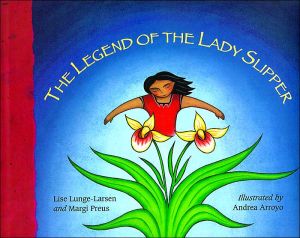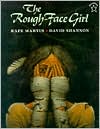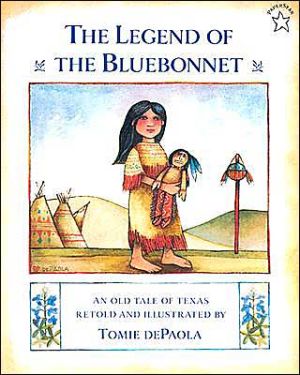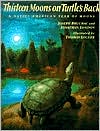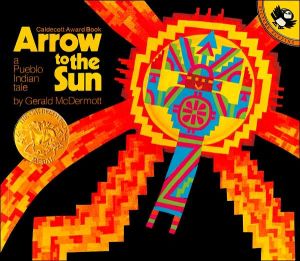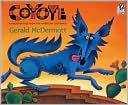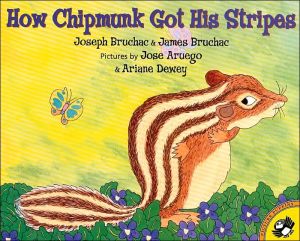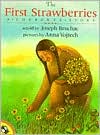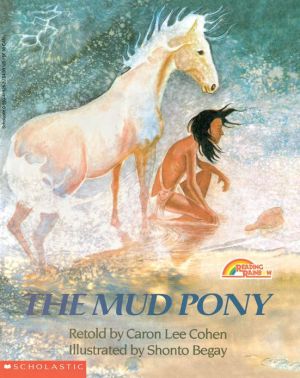The Legend of the Lady Slipper
Never pick a lady slipper. If any part is picked, the entire flower dies. And it grows there, in the northern woods, to mark the courage and strength of a small girl who lived long ago—a girl who saved all of her people from a terrible disease by listening carefully to the whispering snow, the rumbling ice, and the dancing northern lights.\ \ \ In this retelling of an Ojibwe tale, a girl's act of bravery to save her family leads to the appearance in the world of the...
Search in google:
Never pick a lady slipper. If any part is picked, the entire flower dies. And it grows there, in the northern woods, to mark the courage and strength of a small girl who lived long ago—a girl who saved all of her people from a terrible disease by listening carefully to the whispering snow, the rumbling ice, and the dancing northern lights. Publishers WeeklyIn their appealing first book, the authors offer a smooth retelling of an Ojibwe tale, weaving a number of melodic foreign words into their narrative. At the center of the legend, which explains the origin of the ma-ki-sin waa-big-waan, or lady slipper flower, is a courageous girl who braves a fierce snowstorm to cure her ailing family and fellow villagers. Wearing deerskin moccasins, she walks all day until she reaches the wigwams of the people who have healing herbs. Worried that the illness at home may be worsening, she insists on setting back immediately and loses her moccasins in the deep snow; still she trudges on, leaving bloody footprints on the white ground. Her valiant efforts save the village and, when the snow melts, she and her beloved brother find lovely, moccasin-shaped blooms in place of her bloody tracks. In Arroyo's (In Rosa's Mexico) stylized watercolors, similar to Stefano Vitale's artwork, the warm hues of the heroine's native dress and moccasins, as well as of the elegant lady slippers, pop from a cool palette dominated by nature's blues and greens. An unusual simplicity and fluidity mark both text and art in this ideal choice for a springtime read-aloud. Ages 4-8. (Mar.) Copyright 2000 Cahners Business Information.\|
\ Publishers WeeklyA courageous girl braves a fierce snowstorm to cure her ailing family and fellow villagers in this graceful retelling of an Ojibwe tale, which explains the origin of the ma-ki-sin waa-big-waan, or lady slipper flower. "An ideal choice for a springtime read-aloud," PW said. Ages 4-8. (May) Copyright 2004 Reed Business Information.\ \ \ \ \ Publishers Weekly\ - Publisher's Weekly\ In their appealing first book, the authors offer a smooth retelling of an Ojibwe tale, weaving a number of melodic foreign words into their narrative. At the center of the legend, which explains the origin of the ma-ki-sin waa-big-waan, or lady slipper flower, is a courageous girl who braves a fierce snowstorm to cure her ailing family and fellow villagers. Wearing deerskin moccasins, she walks all day until she reaches the wigwams of the people who have healing herbs. Worried that the illness at home may be worsening, she insists on setting back immediately and loses her moccasins in the deep snow; still she trudges on, leaving bloody footprints on the white ground. Her valiant efforts save the village and, when the snow melts, she and her beloved brother find lovely, moccasin-shaped blooms in place of her bloody tracks. In Arroyo's (In Rosa's Mexico) stylized watercolors, similar to Stefano Vitale's artwork, the warm hues of the heroine's native dress and moccasins, as well as of the elegant lady slippers, pop from a cool palette dominated by nature's blues and greens. An unusual simplicity and fluidity mark both text and art in this ideal choice for a springtime read-aloud. Ages 4-8. (Mar.) Copyright 2000 Cahners Business Information.\|\ \ \ School Library JournalK-Gr 2-In this pourquoi tale, a girl undertakes a dangerous winter journey and risks her own life to bring healing herbs to her sick family and village. In crossing the snow, her moccasins are lost but she continues on, leaving bloody footprints in her wake. She returns to her village in a weak and sickened condition. When she has recovered in the spring, she discovers pink flowers that look like little moccasins in place of her bloody footsteps. The simple, declarative text includes some Ojibwe terms that are defined within the narrative. Sources are cited in an authors' note. Unfortunately, the cartoonlike watercolors are lacking in cultural distinctiveness. The characters are wanting in articulation and expression. The palette is bright, with the main character dressed in orange, red, and purple, and landscapes often include a vivid green not found in nature. Though folktales are not to be taken literally, readers familiar with the Ojibwe will notice that the heroine does not wear snowshoes in her winter quest. This gives the impression more of a fragment than a fully developed story, but the image of the bloody footprints turning into flowers is sure to captivate children. Pair this with Tomie dePaola's Legend of the Bluebonnet (Putnam, 1983).-Kate McClelland, Perrot Memorial Library, Greenwich, CT Copyright 1999 Cahners Business Information.\ \ \ \ \ Kirkus ReviewsLunge-Larsen and Preus debut with this story of a flower that blooms for the first time to commemorate the uncommon courage of a girl who saves her people from illness. The girl, an Ojibwe of the northern woodlands, knows she must journey to the next village to get the healing herb, mash-ki-ki, for her people, who have all fallen ill. After lining her moccasins with rabbit fur, she braves a raging snowstorm and crosses a dark frozen lake to reach the village. Then, rather than wait for morning, she sets out for home while the villagers sleep. When she loses her moccasins in the deep snow, her bare feet are cut by icy shards, and bleed with every step until she reaches her home. The next spring beautiful lady slippers bloom from the place where her moccasins were lost, and from every spot her injured feet touched. Drawing on Ojibwe sources, the authors of this fluid retelling have peppered the tale with native words and have used traditional elements, e.g., giving voice to the forces of nature. The accompanying watercolors, with flowing lines, jewel tones, and decorative motifs, give stately credence to the story's iconic aspects. (Picture book/folklore. 4-8)\ \
